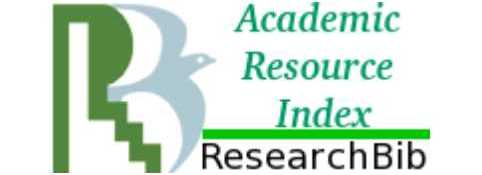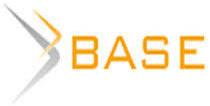The context of the development and transformation of Pakistan's traditional religions in the 21st century
Although Pakistan was created for Hindustani Muslims, in its first stage of formation it was not a country for Muslims, but developed as a secular country with civil rights for all. Islamization began from the moment of the adoption of the 1956 Constitution and the adaptation of the northwestern territories in the 70s, but aggressive Islamization was imposed on Pakistan during the reign of Ziya Ul Hak and the actual US monitoring of religion-politician. Currently, Pakistan is striving to move away from this model, but this is not always possible due to the functioning of aggressive Islamic parties and movements in the country, which, like supporters of westernization, receive support under the neocolonial policy of the collective West. The Pakistani society itself is currently characterized by processes of religion transformation in three directions: westernization, arabization by moderate type (average path of educated moderation) and Islamization. The greatest active work in social networks is carried out by supporters of the latter in the development of Western intelligence services, which were previously used to create Al Caida, Taliban, ISIS prohibited in Russia. Given the heterogeneity of the Islamic Pakistani society, the transformation and development of religion goes in them in different directions and at different speeds, while in view of a number of factors, high social groups of Shiites are subject to the greatest transformation. The remaining religions of the country are also in search of their path within the framework of Pakistani society, transforming their religion in different directions. So Christians from the educated higher social strata are most characterized by westernization, but with at the same time as the centralization and convergence around religious centers with the creation of strong communities. Pakistani Sikhs did not create a separate community and their religion is developing in the mainstream of Indian Sikhism. Hindu communities of the urban type develop in themselves (having little contacts with India Hinduism) or adjoin international organizations such as ISKCON with a general direction of creating clear Hindu canons, returning to fundamental Hinduism, but with the involvement of Western trends. Rural, poorly educated groups of Hindus and Christians often follow the path of syncretism, combining in their religious practices both the traditions of their religion and neighboring religious groups. Thus, the development and transformation of the main religions of Pakistan is currently quite active, although multidirectional.
Bakanova, М. V. (2023), “The context of the development and transformation of Pakistan's traditional religions in the 21st century”, Research Result. Sociology and management, 9 (2), 89-99. DOI: 10.18413/2408-9338-2023-9-2-0-7.


















While nobody left any comments to this publication.
You can be first.
Bakanova, M. V. (2022), Precedenty ekonomichesko-politicheskogo razvitiya Xajber-Paxtunvy v novejshee vremya. Geopolitika [Precedents for the economic and political development of Khyber Pakhtunwa in recent times. Geopolitics] [Online], available at: https://www.geopolitika.ru/article/precedenty-ekonomichesko-politicheskogo-razvitiya-hayber-pahtunvy-v-noveyshee-vremya (Accessed 06 April 2023). (In Russian)
Bakanova, M. V. (2022), K diskussii o feministskom dvizhenii v Pakistane. Blog na ploshhadke RSMD [Towards a discussion about the feminist movement in Pakistan. RIAC Blog] [Online], available at: https://russiancouncil.ru/blogs/marina-bakanova/k-diskussii-o-feministskom-dvizhenii-v-pakistane/ (Accessed 12 April 2023). (In Russian)
Fokin, A. (2022), “Ex-Prime Minister of Pakistan, who visited Russia, may be hanged for blasphemy”, Komsomolskaya Pravda May 2, 2022 [Online], available at: https://www.kp.ru/daily/27387/4581704/ (Accessed 12 April, 2023). (In Russian)
Abbas, N. (2017), How Pakistan Abandoned Jinnah’s Ideals. The New York Times, 15.08.2017 [Online], available at: https://www.nytimes.com/2017/08/15/opinion/pakistan-jinnah-ideals-abandoned.html (Accessed 12 April 2023).
Ahmad, Gh. (2020), Constitution of 1956, published in 2020 [Online], available at: https://www.academia.edu/16457090/Constitution_of_Pakistan_1956 (Accessed 06 April 2023).
Chilana, R. S. (2005), Sikhism: Building a Basic Collection on Sikh Religion and Culture, Reference & User Services Quarterly, 45 (2),
108-116.
Gyanendra, P. (2004), Remembering Partition: Violence, Nationalism and History in India, Johns Hopkins Universit., Cambridge University press. Social Scientist, 32 (1/2), 212. DOI: 10.2307/3518329.
Ḥaqqānī, H. (2005), Pakistan: between mosque and military, Washington: Carnegie Endowment for International Peace, 131.
Hiro, D. (2012), Apocalyptic realm: jihadists in South Asia, New Haven. CT: Yale University Press, 200-210.
Jacobsen, D. (2011), The World's Christians: Who they are, Where they are, and How they got there, John Wiley & Sons, 416.
Pervez, M. (2004), A Plea for Enlightened Moderation, The Washington Post [Online], available at: https://www.washingtonpost.com/wp-dyn/articles/A5081-2004May31.html (Accessed 12 April 2023).
Schaflechner, Jü. (2018), Hinglaj Devi: identity, change, and solidification at a Hindu temple in Pakistan, New York, NY: Oxford University Press, 145-290.